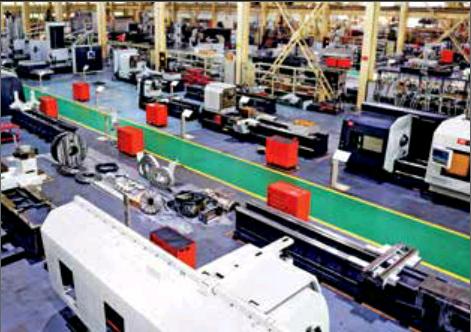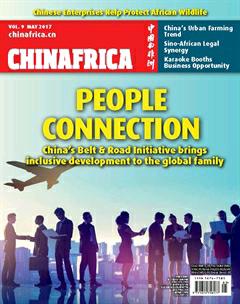Well Connected
By+Zhou+Xiaoyan+and+Wen+Qing


ChinaS northeastern region is set for a make-over. Long seen as taking a back seat in the countrys economic growth wave over the past three decades, the State Council, Chinas cabinet, has unveiled a new plan to change this status quo.
The regions three economically challenged provinces of Liaoning, Jilin and Heilongjiang are in line to establish one-on-one partnerships with three economically developed provinces in east and south China, as well as between four northeastern cities and four economically flourishing cities.
According to the plan, released in March, provincial partnerships will be set up between Liaoning and Jiangsu, Jilin and Zhejiang, and Heilongjiang and Guangdong; while pair-up cooperation will be created between the cities of Shenyang (Liaoning) and Beijing, Dalian (Liaoning) and Shanghai, Changchun (Jilin) and Tianjin, and Harbin (Heilongjiang) and Shenzhen in Guangdong. The work plan comprises 18 specific tasks in the four areas of institutional innovation, industrial restructuring, boosting entrepreneurship and building cooperation platforms.
As part of a broader strategy to revitalize the northeast, this new plan is a policy innovation, as it aims to coordinate development and create benefits for both the northeast and its more developed partners, instead of simply providing one-way assistance or poverty alleviation. Under the plan, exchanges and regular training of officials will play a significant role in emancipating northeastern residents mindsets to embrace market economy concepts.
Innovation in motion
Zhou Jianping, Director of the Department of Northeastern Region Revitalization at the National Development and Reform Commission (NDRC), described the partnerships as examples of enclave economies, a development pattern which aims to coordinate economic development and complement resources through inter-regional management and cooperation.
“It is based on the evaluation of the resources, industrial foundations, development levels and present cooperation arrangements in involved provinces and cities,” he said at a press briefing on the new work plan which took place in Beijing on March 21.
The NDRC says the northeastern region boasts abundant natural resources, a good industrial foundation, strong capabilities in science and technology, and huge room for development. The eastern and southern provinces and cities, meanwhile, have a more mature market economy system, in addition to abundant capital and buoyant private enterprises.
According to the new work plan, the concrete measures include the temporary assignment of provincial officials with rich experience and knowledge of market economy principles from the east and south of the country to the northeast and regular training sessions for civil servants and employees of enterprises. Such steps are vital for transforming planned economy thinking into a market economy mindset so that the northeast can become more competitive and innovative.
China has implemented three rounds of revitalization of the northeast since 2004. According to Fu Cheng, Chief of the Institute of Sociology at the Jilin Academy of Social Sciences, in the first two rounds, the Central Government made preferential policies for the region and expected that would take care of the problem. Now the revival plan has been upgraded by giving the region the opportunity to have positive interactions with more developed eastern and southern regions, Fu said.
“The three northeastern provinces have much to learn from the economically developed provinces, which have accumulated rich experience over the past three decades of reform and opening up and have better understanding of development, effects of policy incentives and market rules,” Fu told ChinAfrica.
Fu said benefits also go the other way. “The northeastern region has much to offer to the eastern and southern regions as well,” Fu argued.“For instance, it has an advanced cultural sector and many prestigious universities from which hundreds of thousands of students graduate each year.”
“Moreover, as the first region in China to complete industrialization, the northeast has a lead in many manufacturing sectors, such as the automobile industry in Jilin and equipment manufacturing in Liaoning. Their expertise in these areas and accumulated experience in setting up joint ventures with foreign companies could be learned by their counterparts in other regions,” he said.
More to do
Over recent years, the Central Government has issued a number of plans to revive the northeast. The regions development lost steam in the 1990s because of Chinas economic transition and reform of stateowned enterprises (SOEs), and its lackluster economic performance has since continued.
The latest data from the National Bureau of Statistics show the three provinces differ in terms of economic growth. In 2016, the GDP of Heilongjiang and Jilin respectively increased by 6.1 percent and 6.9 percent, similar to the national average of 6.7 percent, whereas that of Liaoning shrank by 2.5 percent.
In the first two months of 2017, the industrial value added of the northeast increased by a meager 0.8 percent, much lower than the national average of 6.3 percent, while fixed assets investment in the region declined by 17.8 percent year on year, compared to the national average of 8.9-percent growth.
A lack of dynamic private businesses is also a major concern for the northeast. A recent ranking of the top 500 private businesses in China released by the All-China Federation of Industry and Commerce contained only 10 enterprises from the northeast, whereas Zhejiang, Jiangsu and Guangdong each have nearly 100 firms on the list.
The regions economy, however, is far from satisfactory. What are the reasons?
One possible explanation is the shortage of outstanding entrepreneurs and other people clued up about how the market economy works. After several decades during which the economy was centrally planned, the older generations in the northeast tend to be overcautious in private businesses and reform. Such behind-the-times thinking obstructs the development of private businesses, one of the major driving forces of Chinas economy.
“To reverse the outdated notions about the market economy of the local governments and people is at the heart of efforts to revive this region,” said Xiang Tao, a professor at the Northeastern University in Shenyang.
Furthermore, while the region has a strong need for skilled laborers, the population of the three northeastern provinces has been shrinking in recent years due to net outward migration and comparatively low fertility rates. High-caliber workers have drained from the three provinces due to the slowing regional economy, and this has in turn undercut local growth. According to NDRC data, from 2010 to 2015, approximately 240,000 people moved away from the three provinces to other regions in pursuit of better job opportunities and a more comfortable climate.
According to Fu, SOEs account for a large proportion of the northeastern economy. Most locally administered SOEs have encountered difficulties in recent years, such as in dealing with social security funding shortages and resettlement of laid-off workers. In addition, as the regions population is quickly aging, the provincial pension deficits are expanding, and its unrealistic to expect the region to fix this problem by itself. If the Central Government could give more support in these areas, it would help the development of the northeast in a big way.
“The Central Government should be patient with this new revitalization attempt to allow a time window for the northeastern economy to gradually adjust itself, make changes and let market forces kick in,” Fu said.

